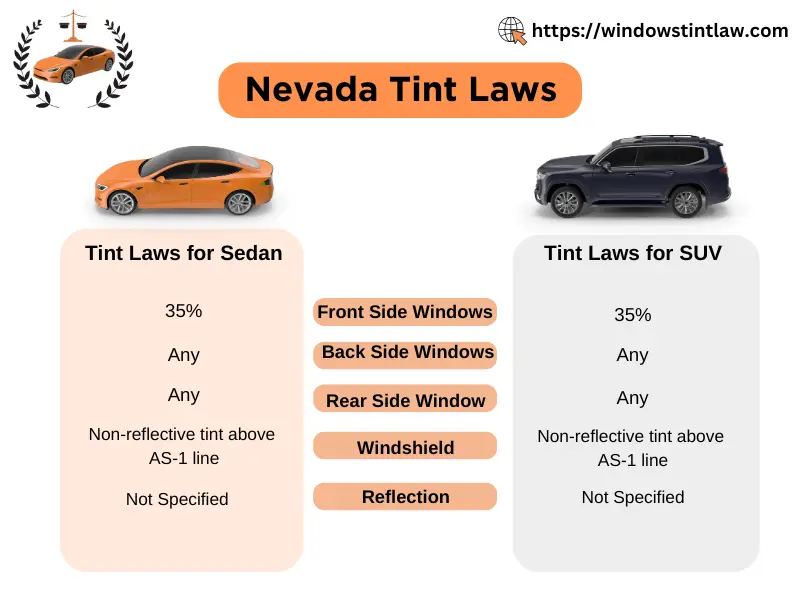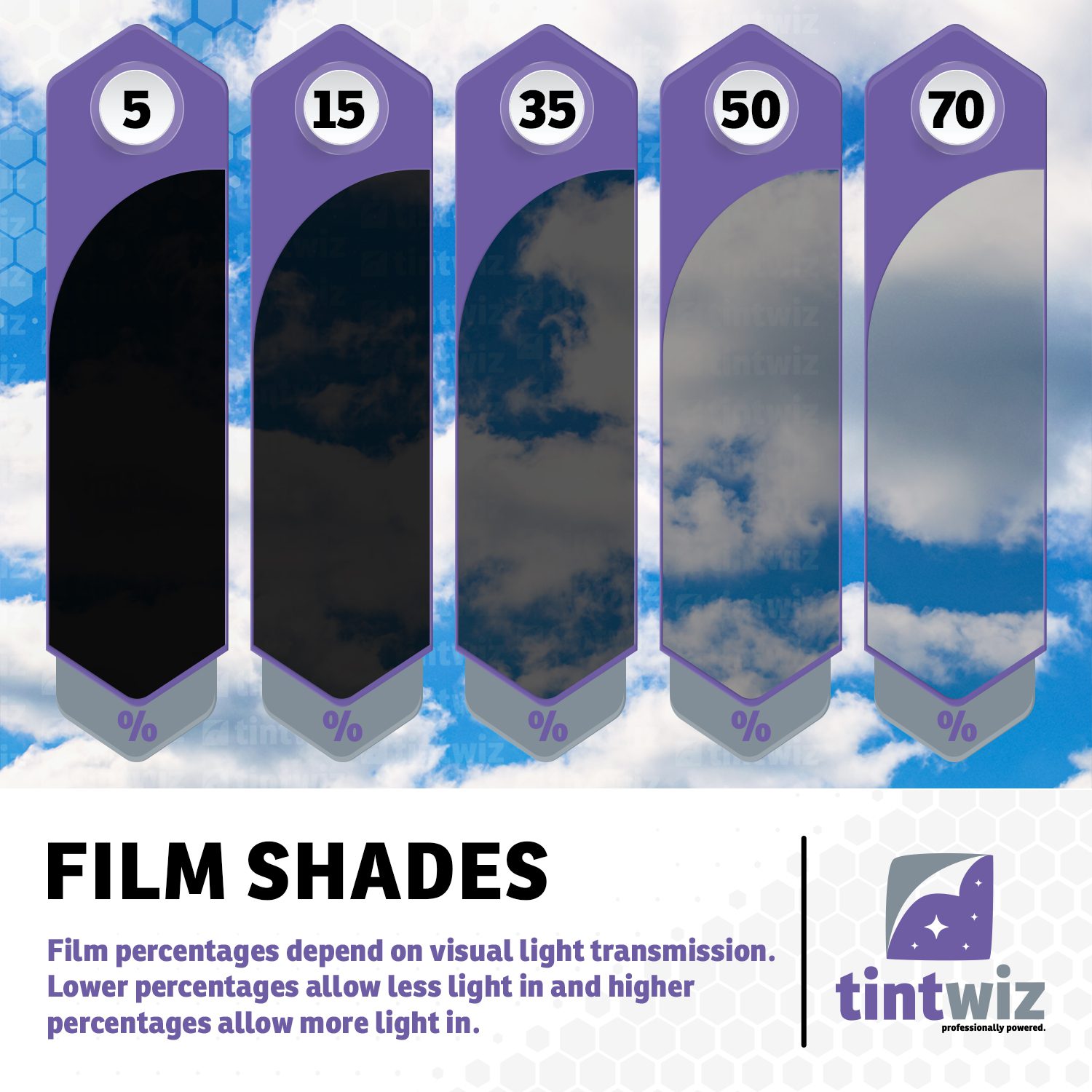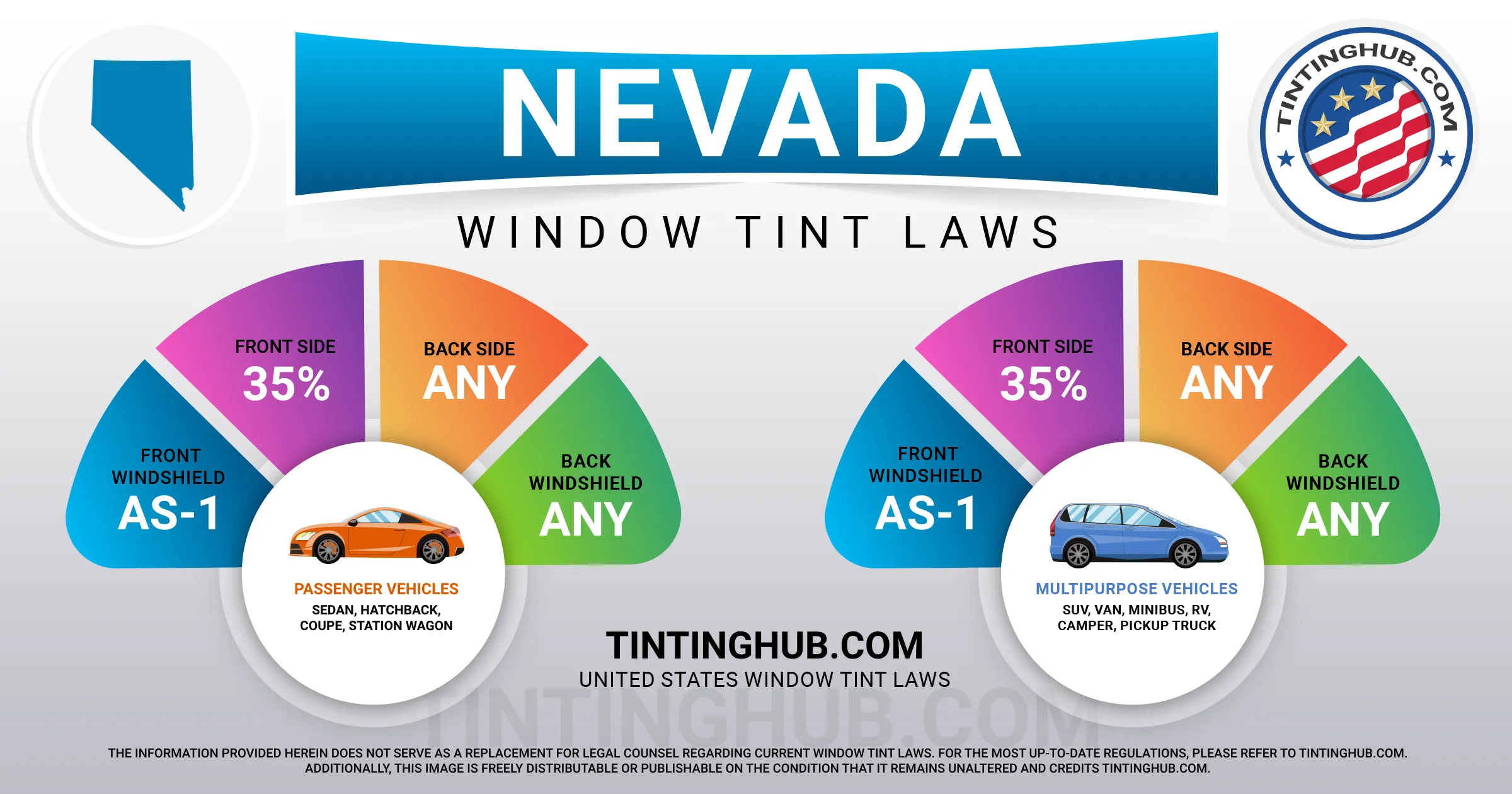Imagine driving under the blazing Nevada sun without a hint of shade in your car. It’s uncomfortable, right?
You might be considering getting your car windows tinted to escape the heat and protect your interior. But before you make any decisions, there’s something you need to know: Nevada Tint Law. Understanding these regulations is crucial for anyone in the Silver State looking to tint their car windows.
You wouldn’t want to face fines or have to remove the tint after spending your hard-earned money on it, would you? This article is your roadmap to navigating the legal landscape of window tinting in Nevada. Stick around, and you’ll discover everything you need to ensure your car stays cool while staying on the right side of the law.
Legal Tint Levels
Navigating the world of window tinting in Nevada can feel like a maze. You want to keep your car looking sleek while staying on the right side of the law. Nevada’s tint laws are quite specific, dictating how dark or reflective your windows can be. Understanding these legal tint levels is crucial if you want to avoid fines and ensure your vehicle is compliant.
Front Side Windows
Front side windows in Nevada must allow more light to pass through than other windows. This means your tint must permit at least 35% of visible light to enter the car. Imagine cruising through the Nevada desert and enjoying the view without feeling the harsh sun on your face. A legal tint helps reduce glare while keeping your ride cool. Wouldn’t it be great to know you’re following the rules while enhancing your driving experience?
Back Side Windows
The rules are more lenient for back side windows. You can opt for a darker tint, as long as you maintain visibility for safety. Consider how a darker tint can offer privacy and protection from UV rays. It’s a perfect choice if you often carry valuables or cherish personal space. Isn’t it reassuring to know you can boost security without compromising on style?
Rear Window
Rear windows also enjoy flexibility in tint levels. You can go as dark as you want, provided you have side mirrors to ensure visibility. Picture driving with a comfortably shaded rear window, knowing it shields your car’s interior from the relentless Nevada sun. Wouldn’t you appreciate the peace of mind knowing your passengers are protected while you adhere to legal standards?
Windshield Regulations
The windshield has the most restrictive tint laws. You can apply a non-reflective tint only to the top 6 inches of the windshield. Imagine how this small strip could reduce glare during those early morning drives. It’s a simple addition that enhances comfort without obstructing your view. What better way to ensure safety while maximizing your vehicle’s performance?
Understanding Nevada’s tint laws helps you make informed decisions that reflect your needs and style. Whether you’re seeking privacy or aiming to reduce sun exposure, adhering to legal tint levels keeps you safe and stress-free. Have you checked if your current tint complies with the law? It’s worth considering to avoid any surprises down the road.

Credit: windowstintlaw.com
Exemptions And Special Cases
The Nevada Tint Law outlines specific rules for vehicle window tinting. But, there are exemptions and special cases where rules might differ. Understanding these can help you comply with state regulations. This section will explore medical exemptions and special rules for classic cars.
Medical Exemptions
Some individuals may need darker tints for medical reasons. In Nevada, medical exemptions are available. This allows individuals to use darker window tints than normally permitted. A licensed physician must provide a certificate for this exemption. The certificate should explain the medical need for special tinting. Keep this documentation in your vehicle at all times. It helps avoid any legal issues during vehicle inspections.
Classic Cars And Vintage Vehicles
Classic cars often have unique requirements. Nevada law offers some flexibility for these vehicles. Owners of vintage vehicles may apply for special tinting permissions. This helps maintain the vehicle’s original aesthetic while adhering to safety standards. Make sure you have the necessary documentation for these exemptions. Always check that your vehicle qualifies as a classic or vintage model under Nevada law.
Penalties For Non-compliance
Violating Nevada’s tint law can lead to fines and mandatory removal of illegal tint. Repeated offenses might result in increased penalties. It is essential to adhere to legal tint limits to avoid costly repercussions.
Navigating Nevada’s tint laws can be tricky. It’s essential to understand the penalties for non-compliance. Ignoring these laws can lead to unexpected fines, failed vehicle inspections, and even safety issues. You might find yourself wondering if the sleek look of dark-tinted windows is worth the potential hassle. Let’s dive into the specifics so you can make an informed decision.Fines And Fees
Non-compliance with Nevada’s tint laws can get expensive. If your windows are tinted too dark, expect a fine. The cost can range from $50 to $250 for a first offense. Subsequent violations can increase this amount significantly. You might find yourself shelling out more than you anticipated. It’s important to weigh these costs against the benefits of having tinted windows. The law doesn’t just hit your wallet. It can also impact the resale value of your vehicle. Potential buyers might be hesitant to purchase a car that doesn’t meet legal standards.Impact On Vehicle Inspection
Tint violations can affect your vehicle inspection results. In Nevada, vehicles must pass regular inspections to stay roadworthy. A non-compliant tint can lead to a failed inspection. This failure means you can’t legally drive your vehicle until the issue is resolved. It might seem like a minor inconvenience, but it can disrupt your daily routine. Imagine being late to work because your car didn’t pass inspection. Addressing the problem can also be time-consuming. You’ll need to have the tint adjusted or removed, followed by a re-inspection. This process can take days or even weeks, depending on your schedule. Ultimately, staying compliant with tint laws saves you time and money. Have you ever faced a surprise penalty or inspection failure due to non-compliance? Understanding these rules can help you avoid similar pitfalls.
Credit: tintwiz.com
Tips For Choosing Tint
Choosing the right tint for your vehicle involves understanding Nevada’s tint laws and finding a shade that suits your needs. The right tint can enhance your vehicle’s appearance and provide privacy and UV protection. Here are some tips to guide your decision.
Selecting The Right Tint Shade
The shade of tint you choose affects your vehicle’s look and the comfort inside. Darker tints offer more privacy but must comply with legal limits. In Nevada, the front side windows must allow more than 35% of light in. Consider your personal preference and the legal restrictions. A lighter tint can still offer UV protection without compromising visibility.
Professional Vs. Diy Installation
Deciding between professional and DIY installation depends on your skills and budget. Professional installation ensures compliance with tint laws and provides a clean, bubble-free finish. Experts have the tools and experience to apply tint flawlessly. DIY installation can save money but requires precision and patience. Mistakes can lead to bubbles or peeling, affecting the quality and appearance.
Maintaining Tinted Windows
Nevada Tint Law requires regular maintenance of tinted windows to ensure legal compliance. Clean windows gently to avoid damage. Inspect for any peeling or bubbling. Proper care can help maintain clarity and effectiveness of the tint, keeping your vehicle within legal standards.
Maintaining tinted windows ensures they stay effective and legal. Tinted windows reduce glare and protect your car’s interior. But, they need regular care to last. In Nevada, following tint laws is crucial. Proper maintenance helps you comply with these laws. Let’s explore how to care for and repair tinted windows effectively.Cleaning And Care
Clean tinted windows gently to avoid damage. Use a soft cloth and mild cleaner. Avoid harsh chemicals that might scratch or fade the tint. Spray the cleaner on the cloth, not directly on the window. Wipe the windows in a circular motion. This prevents streaks and keeps your tint looking fresh. Check your windows regularly for dirt or smudges. Clean them as soon as possible. This prevents buildup that can damage the tint. Regular cleaning helps maintain the tint’s appearance and effectiveness.Repairing Damaged Tint
Notice any bubbles or peeling on your window tint? Address them quickly. Small bubbles can be fixed with a pin and a credit card. Gently pop the bubble and smooth it out. Severe damage might require professional help. Consider getting a replacement if the tint is beyond repair. Keep an eye on the edges of the tint. Ensure they remain intact and securely adhered to the glass. Properly maintaining your tinted windows helps them last longer. It also ensures compliance with Nevada’s tint laws.
Credit: tintinghub.com
Frequently Asked Questions
What Is The Darkest Legal Tint In Nevada?
In Nevada, the darkest legal tint for the front side windows is 35% VLT. Rear windows and back glass can have any tint darkness. Make sure your vehicle’s tint complies with state regulations to avoid fines.
Is 5% Tint Legal In Las Vegas?
5% tint is not legal in Las Vegas for front side windows. Nevada law requires at least 35% visible light transmission on front windows. Rear windows can have darker tint, but check local regulations for specific details. Always ensure compliance with state laws to avoid fines.
In What State Is 20% Tint Legal?
20% tint is legal in states like California and Arizona for rear windows. Front windows often have stricter regulations. Always check specific state laws to ensure compliance with local tint regulations. Tint laws vary, so verify details with state authorities before applying window tinting.
Can You Still See Through 20% Tint?
Yes, you can see through 20% tint, but visibility is reduced. It offers moderate privacy and some glare reduction.
Conclusion
Understanding Nevada’s tint law is crucial for drivers. It helps avoid fines. Compliance ensures safety and clarity on the road. Always check your window tint before driving. Different rules apply for front and rear windows. It’s important to stay informed about changes in regulations.
Research and consult professionals for correct tint application. Remember, legal tint enhances driving experience without worries. Stay safe and enjoy a smooth drive in Nevada. Following these guidelines keeps your car within legal limits. Keep your ride stylish and legal with proper window tinting.
